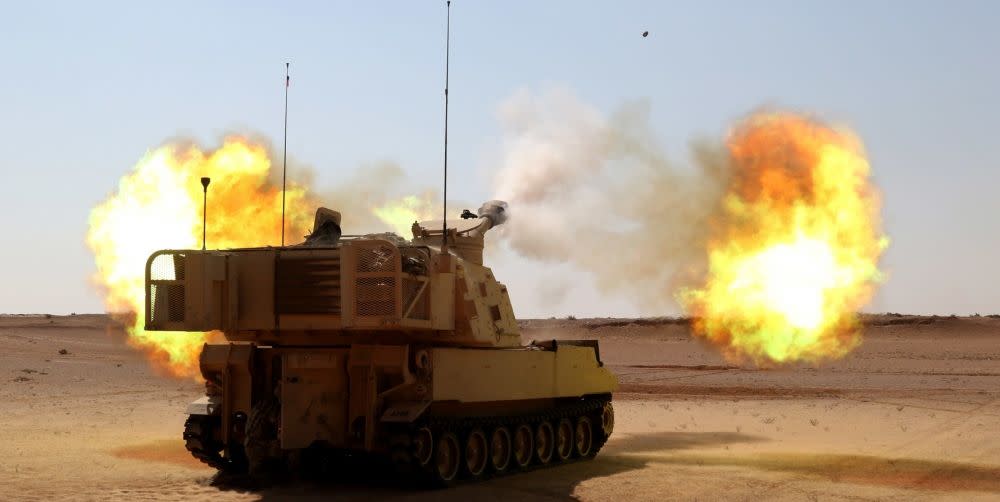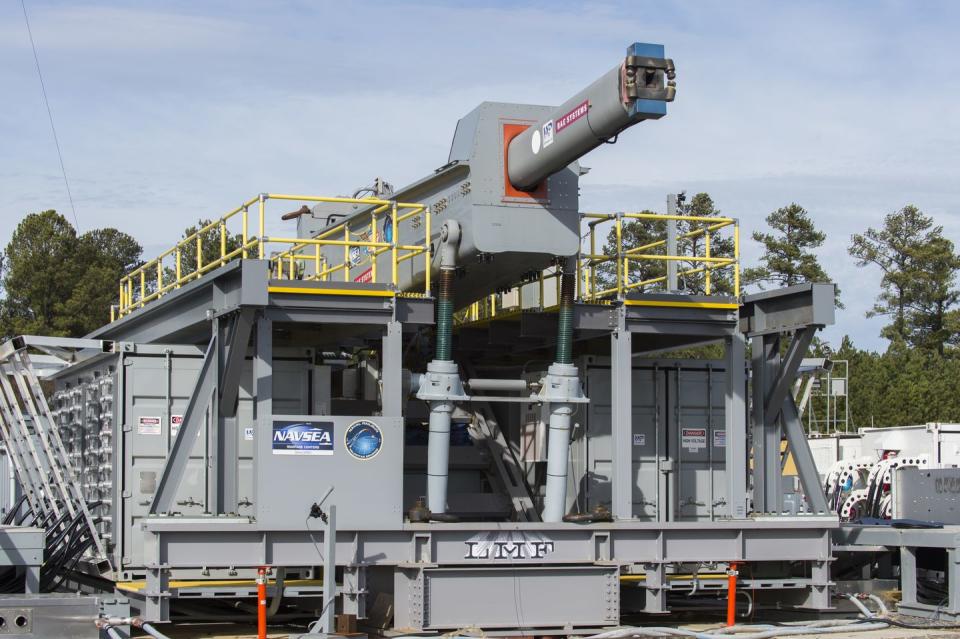The Army’s 1,000-Mile Long Range Cannon Is Coming Together

The Army is developing a long range cannon with a range in excess of 1,000 miles.
The Army wants a prototype by 2023.
The cannon, along with Army hypersonic missiles, will allow the service to strike targets far behind enemy lines.
The U.S. Army is pushing ahead with plans to field a cannon with an astounding 1,000-mile+ range. The cannon, along with hypersonic weapons, will allow the service to attack long range, strategic-level targets far beyond the reach of existing Army systems.
According to Defense News, the Army’s program manager for long range fires, Col. John Rafferty, the service expects the gun to have a range of 1,000 nautical miles—or 1,150 statute miles. The technology behind the cannon is described as “cutting edge" that's so advanced that the service is not sure if the gun would be affordable.
The Army is set to conduct an early test of a key tech component at Naval Support Facility Dahlgren in Virginia “very soon.” NSF Dahlgren was the home of the Navy’s electromagnetic railgun program, before the gun was shipped out to White Sands Missile Range in New Mexico for additional testing.

Exactly how the U.S. Army intends to field a cannon with a range of 1,150 miles is unknown. The Army’s heaviest gun, the 155-millimeter gun on the M109A6 Paladin self-propelled howitzer, has a range of just 25 miles. The largest gun ever built, Schwerer Gustav, had a range of 28 miles. In the late 1980s, Canadian engineer Gerald Bull oversaw construction of the System 350 heavy gun for Saddam Hussein’s Iraq.
Built into the side of a hill, System 350 had a barrel diameter of 350 millimeters and could lob a 300 pound projectile with 33 pounds of high explosives up to 265 miles. Gerald Bull was assassinated in 1990 and System 350 was never completed.
Ordinary artillery guns work by loading an artillery shell, followed by a powder charge, into the gun’s breech. When the gun is fired, burning powder charges create huge amounts of pressure behind the shell. As the pressure builds up, the shell is pushed out of the barrel and down range toward the target.
A 2018 report on the “thousand mile gun” suggests that it is probably a really big gun that fires a rocket-assisted projectile (RAP). At the time, Rafferty said the gun was based on proven principles and that “we’re scaling up things that we’re already doing.” A rocket-assisted projectile incorporates a rocket motor into the base of an artillery shell. The result is a shell with a smaller explosive charge but longer range. A larger diameter artillery shell could carry a large payload of solid rocket fuel, vastly increasing the projectile’s range.

Could the long range gun be an adaptation of the Navy’s railgun? It’s unlikely. Railguns, as powerful as they are, likely can’t fling something 1,150 miles. Railguns also need lots of energy, and it’s easier to get that energy from burning bags of chemicals than from a megawatt-sized power source. Another clue is the Army’s comment that the projectiles themselves could cost up $400,000 to $500,000 each: railgun projectiles are simple and inexpensive, while rocket engines are significantly more expensive.
As the services shift focus away from guerrilla warfare to great power competition, the Army is planning to use the long range cannon against major potential adversaries. The long range gun would give the Army an unprecedented ability to hit long range targets without calling on other services, particularly the U.S. Air Force, to engage them.
The Army aims to have a prototype ready by 2023 and will then decide if it wants to fully develop the gun for service.
Source: Defense News
You Might Also Like

